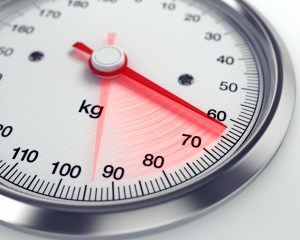After age 50, weight loss becomes undeniably more difficult. As we age, we no longer have the speedy metabolism that we had in our younger years. Building muscle is a key to expediting weight loss as well as maintaining strength and longevity as we age. But, in comparison to weight loss, muscle synthesis rates drag as we get older. Why is this, and is there any way to combat it? Thankfully, there are ways to increase your rate of muscle synthesis. Read on to find out what you have to do to support building muscle after 50.
Why Is Muscle Harder to Maintain as We Age?
When we get older, the cellular mechanisms throughout the body don’t work quite as well as they did when we were in our 20’s and 30’s. The metabolism slows down and so does the rate of cellular repair processes that are responsible for fixing damaged cells. The bogged down cell mechanisms are evident from the telltale signs of aging, such as fine lines and wrinkles, forgetfulness, and more fat accumulation. Protein and muscle synthesis are not spared of metabolic sluggishness, with muscle tone diminishing as we get older. The process of losing muscle as we age is a condition referred to as sarcopenia.
Though aging is inevitable, the rate of the aging process, however, can be influenced by our choices in terms of lifestyle and diet.
Why It’s So Important to Have Muscle
Before we dive into how to build muscle after 50, let’s first look at why you should be focused on building muscle in middle-aged and later adulthood. First of all, having lean muscle mass is a health protector in nearly every way. What is lean muscle, anyways? Lean muscle is muscular tissue throughout the body that boosts your metabolic rate, allowing you to effectively burn fat, burn more calories at rest, and have a metabolism that matches that of your earlier years. Improved body composition also helps fight against metabolic conditions by improving glucose levels and insulin sensitivity while also boosting your immune function.
Finally, the amount of muscle in the body is a major determinant of longevity and injury risk. Sufficient muscle mass helps to prevent frailty, increases agility and strength, while also taking pressure off of your bones and joints. Plus, having adequate muscle is critical to facilitating recovery from injuries and surgeries.
Building muscle can seem like a daunting journey if you’re new to working out. However, rest assured that with the right process, it’s completely doable. You don’t need to be a bodybuilder or implement bodybuilding techniques to gain muscle and get good results. You can start from wherever you’re at! So, let’s get into the strategies and tips you can use to start packing lean muscle onto your frame.
“Abs Are Made in the Kitchen”
Are you familiar with this phrase? If so, you probably have an understanding of how important nutrition is when it comes to building muscle. All of the exercises in the world won’t yield the results you want if you’re lacking good nutrition.
Nutrition is the first piece of the puzzle when it comes to supporting fitness over 50 and facilitating the synthesis of lean muscle.
1. Essential Amino Acids Are Indispensable to Muscle Synthesis
Everyone likes to talk about how much protein you’re getting, but less focus seems to be put on the fundamental compounds that we get from protein to build muscle: amino acids. Amino acids are often described as the building blocks of protein and comprise proteins and hormones that carry out biological processes.
Amino acids are strung together in different arrangements to construct proteins that are shaped to facilitate their function, and there are 20 biologically relevant amino acids that are used in the human body. Of these 20 amino acids, 9 are considered to be essential amino acids because we require a daily nutritional intake of them each day. These nine essential amino acids are histidine, threonine, methionine, lysine, leucine, isoleucine, valine, phenylalanine, and tryptophan. The remaining 11 amino acids can be obtained through food but are also produced by the body.
Getting enough protein is important, but simply eating the recommended daily grams of protein won’t necessarily get your muscles where you want them. The key point here is that you can have an adequate protein intake without getting ideal ratios of essential amino acids. Getting all essential amino acids in optimal ratios is critical to facilitating muscle growth and maintenance after age 50. In fact, adults over age 50 require even more essential amino acids than in younger years. If the body is missing just one of the essential amino acids, muscle wasting may occur, and body functions won’t be able to unfold at top capacity.
So, how can you make sure that you’re getting all essential amino acids in optimal ratios? First, it’s helpful to understand which foods contain all essential amino acids. Animals products are the main source of essential amino acids in optimal ratios. Choose lean animal products like whey protein, nonfat yogurt, low-fat cheese, skim milk, and chicken breast. Fatty fish like salmon is the exception to this rule since the omega-3 fatty acids found in fatty fish are healthy fats that lower inflammation and promote healthy cellular functioning.
The best plant sources of essential amino acids include soybeans and soybean-based products like tofu and tempeh. However, with the exception of soybean products, most plant products alone do not contain all of the essential amino acids needed to build muscle tissue. For example, you could eat heaps of brown rice all day and though you may hit your required protein intake for the day, you would still be missing lysine. A variety of beans, nuts, seeds, and whole grains must be eaten throughout the course of the day in order to provide optimal ratios of essential amino acids for muscle synthesis.
Especially when you’re over the age of 50, it can be time-consuming and tedious to ensure that you’re eating the right amounts of protein sources to get all essential amino acids. Plus, simply eating protein doesn’t necessarily mean your body will absorb all the amino acids it needs. First, the digestive system must break down whole proteins into individual essential amino acids – a tedious process that sometimes doesn’t reach completion. A high-quality essential amino supplement completely eliminates all guesswork and supplies all necessary amino acids in their pure form, optimally supporting muscle growth and repair.
2. Balance Your Macronutrients and Micronutrients
Macronutrients are the larger food compounds including carbs, protein, and fats that afford calories in our diet. Avoid overdoing fad diets like the low-carb diet, low-fat diet, and paleo diet, most of which often recommend cutting out or severely restricting certain nutrients. All three macronutrients are necessary for balanced proportions to make sure your body’s biological processes work together in harmony.
Also make sure that you’re getting high-quality macronutrients from whole, unprocessed foods. For example, carbs from the sweet potato will be much more powerful in fueling your strength training session than a chocolate chip cookie. Similarly, omega-3 fatty acids in salmon will exhibit anti-inflammatory activity and promote recovery more than saturated fats in cheese. A low-sugar shake with essential amino acid powder will promote more effective repair after a workout than an incomplete protein source like beans.
Micronutrients refer to the non-caloric particles in food, including vitamins, minerals, antioxidants, and fiber. All micronutrients are crucial for ensuring that the body operates smoothly and repairs effectively from exercise, injury, and illness. Plant foods are the richest sources of micronutrients, so load up on fruits, veggies, nuts, seeds, and beans to fuel your body and promote faster recovery.
3. Eat Sufficient Calories (But Don’t Overdo It)
Muscles also won’t grow if we don’t eat enough calories. On the contrary, they will simply waste away! If you’re aiming to also lose fat, it’s important to realize that you can still maintain a calorie deficit without depriving yourself of energy.
Avoid a sustained low-calorie diet and instead eat enough calories that fuel your workouts and daily activities. If you do want to incorporate periods of low-calorie consumption into your regimen, aim for intermittent fasting or adding nonconsecutive low-calorie days to your week.
At the same time, don’t eat too many calories either. Metabolic processes in middle age and later adulthood are less efficient than during earlier decades. Though you might gain muscle while in a calorie surplus, you may also develop or worsen metabolic conditions like type 2 diabetes and fatty liver disease.
Your ideal caloric intake will vary based on your age, gender, and activity level.
Physical Activity
Once your nutrition is balanced, it’s time to incorporate regular workouts into your routine. Muscles don’t grow when we don’t use them!
1. Engage in Strength Training
Are you wondering about how to get stronger? The answer is: by strength training. Regular strength training – or resistance training – is the most effective form of exercise for building up your muscles and strength. Strength training is an anaerobic exercise that tests your muscles and their strength and involves either bodyweight exercise or weights.
So, what’s happening when you’re engaging in strength training? If you could observe your muscle tissue on a molecular level during a strength training session, you could see that the fibers in your muscle tissue are tearing with exertion. This is why you must have proper nutrition and incorporate rest days into your routine to ensure that your muscles repair – a process that results in increased strength and muscle growth.
Bodyweight Workouts
Bodyweight workouts are those that harness the weight of your body to challenge different muscle groups. Excellent bodyweight workouts include:
- Pull-ups: This exercise uses your body weight to challenge your arm and shoulder muscles. Start by hanging from a secure bar and pull yourself upwards. If you need extra support, use a resistance band to provide a little assistance as you work up to a full pull-up.
- Push-ups: Lie on your stomach with your toes on the ground and your hands next to you at about shoulder height. Push yourself upwards until your arms are straightened, then lower yourself back down to the floor and repeat. Kneeling push-ups provide an easier variation.
- Lunges: Complete lunges by standing straight, then stepping on the leg out in front. Hinge at the knee, bringing the back knee to the floor. Repeat with both legs.
- Hamstring exercise: Assume a kneeling position and have a gym buddy hold your feet down behind you. Hinge forward towards the floor as slowly as possible, trying to control your movement as much as you can. When you reach the floor, push yourself back up to kneeling position and repeat. This exercise uses your own body weight as resistance to your hamstrings.
Strength Training with Weights
Strength training with weights involves adding equipment to your work out to transform it into a weight training exercise. Weight training tends to be more difficult since it not only challenges your muscles using your body weight but also adds weight.
You can lift weights using free weights or barbells to add extra weight to your exercises. Gym equipment also offers opportunities to incorporate more strength training exercises into your routine.
- Deadlifting: This movement involves lifting as heavy of a weight as you possibly can when in standing position, using a barbell.
- Leg presses and hamstring curls: For the lower body, leg presses and hamstring curls target your large leg muscle groups. You can adjust the amount of weight to give your leg muscles more or less of a challenge.
- Lat pulldowns: Adjust the weight on the machine and pull down on the bar. Make sure your power is coming from your shoulder and back muscles.
- Weighted lunges: Hold free weights in each hand, hanging your arms by your side, and complete lunges.
- Bench press: Lying down on a workout bench, lift a weighted barbell using your arms. Make sure to check that the weight on the barbell is adjusted to your needs, and always have someone there to spot you.
2. Rest Days and Alternating Muscle Groups
Generally, fitness has emphasized the importance of alternating which days you exercise certain muscle groups. If you do a tough, heavyweight workout for the upper body muscle groups on one day, the following day should focus on lower body muscle groups to allow the upper body to rest and repair.
However, you have flexibility with this. A full-body workout that balances the exertion of different muscle groups can be completed several days in a row, as long as your nutrition is on point.
Whatever method you choose, just be sure to avoid overtraining and incorporate one rest day per week into your schedule.
3. Stretching, Warm-Ups and Cool Downs Help Prevent Injury
As we age, we become increasingly prone to stiffness and injury. Muscle stiffness develops from muscular repair without adequate stretching, as cross fibers bind muscle fibers tightly and restrict movement. Inflexible muscle fibers greatly increase the risk of developing an injury during exertion.
In order to lower your risk of injury, dedicate five minutes at the beginning and end of your workout warm-ups and cool-downs that incorporate stretching. Examples of good stretches include side lunges, toe touches, arm swings, core twists, and yoga poses. A little light cardio, such as a jog or brisk walk, can be a good warm-up or cool-down activity as well.
4. Gradually Increase Training Over Time
If you’re new to strength training and resistance training, don’t jump into deadlifts with a 150-pound barbell right off the bat! Doing so will risk serious injury and hamper your muscle-building journey.
Instead, start with bodyweight exercises a couple of times a week and gradually increase the frequency and weight over time as your body adjusts and gains strength.
5. Be Committed, Consistent, and Patient
So, how long does it take to gain muscle?
Though you can absolutely grow abs after 50, you won’t see results overnight. Muscle building is hard work and committing to the process long-term is vital for revealing results. Stay the course and take progress pictures each week. If you follow your workout plan and consistently maintain good nutrition, you will see results after a few weeks. After a few months, you will be well on your way to what you want to achieve.
It’s also important to keep in mind that your body composition is changing even though you may not be seeing obvious results for a few weeks. You will likely feel the results earlier than you’ll see them in the mirror, with enhanced energy and a better night’s sleep.
6. Plan and Document
It’s hard to stick to a process when there’s no plan. Consult a personal trainer to help devise a training program that is designed to fit your specific health needs, body type, and goals. Make sure to map out workout exercises and times in as much detail as possible. More detail helps keep you on track and reduces the likelihood of skipping a planned workout.
As you work through your plan, document the process as you go. This might include jotting down observations and even taking pictures each week. This will help you monitor your progress and see your accomplishments over time.
Forethoughts
When engaging in strength training, always make sure that you use proper form. Verify your plan and form with a certified personal trainer to lower the risk of injury. If you do sustain an injury, get it checked out by a health care provider and be sure to rest that muscle. Before engaging in super high-intensity workouts, have your fitness level evaluated by your physician to make sure you’re physically cleared for that level of physical activity, especially if you have health conditions.
Final Words
Gaining muscle mass after 50 is more work than it used to be. However, with the right strategies, it’s doable and can vastly improve your health and quality of life. If you get all the essential amino acids you need, balance your macros and micros, and consistently engage in strength training, you’ll be able to put on lots of lean muscle, fight age-related muscle loss, and improve your metabolic health.
























